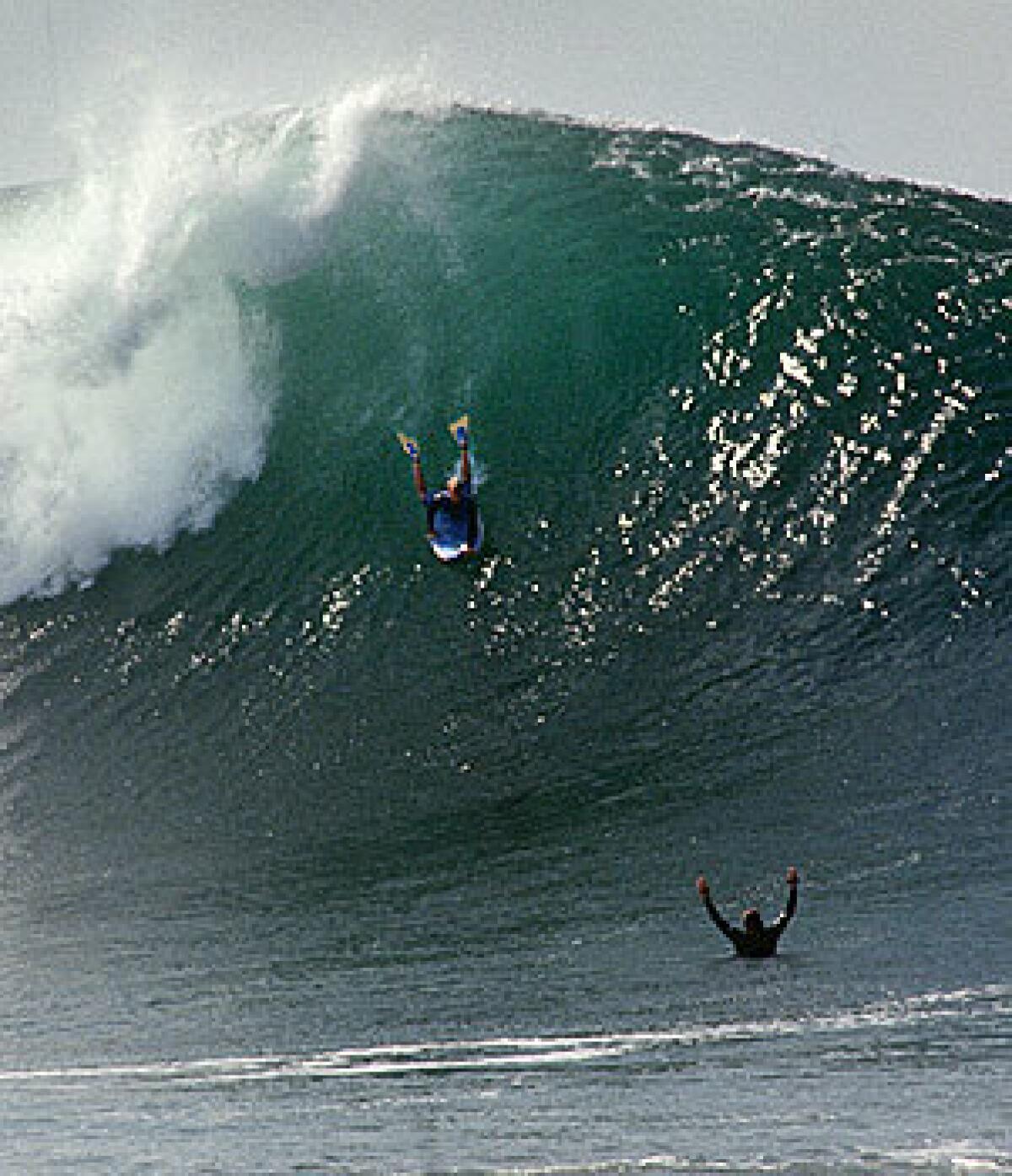‘Surfing’s mosh pit’

- Share via
A clump of bodyboarders churns toward the west jetty at Newport Harbor, jockeying for one of the morning’s best waves. The guy who will ride it is still standing on the beach.
“I got it!” he yells. He takes three quick steps, jumps on a skim board and slides into a 2-foot wave that has bounced off the jetty and is moving east — not toward the shore, but along it. Within seconds, this “side wave” collides at a 90-degree angle with the other wave, now a 6-foot-tall seawater slab. The confluence of moving ocean encases the skim boarder in a tube as wide as it is tall, then demolishes his brief glory in an explosion of water and sand.
That the break accomplishes all this within 10 feet of shore, in water no more than 3 feet deep, says a lot about why the Wedge is legendary and one of the few great breaks not ruled by standard-issue stand-up surfers.
“When everything is working, I’d almost take the Wedge over any wave in the world,” says Ron Romanosky, a longtime Wedge knee boarder and photographer. “Make it or not, it imprints an addiction . The big peak pitches so hard that you’re almost guaranteed being airborne.”
Most Southern California breaks max out at 8 to 10 feet during a summer’s half a dozen or so big south swells. The Wedge’s unusual hydraulics can throw up 20- to 25-foot faces that come down in a roaring barrel roll of water that a rider who survives remembers as a very happy place.
Surfers, who dominate most breaks, tend to avoid the Wedge, with its freefall drop-ins and backwash so propulsive it makes being attached to a hard, pointed object particularly unappealing. At 10 a.m., the bodyboarders too are forced out of the water by the blackball flag, which limits the Wedge to bodysurfers until 5 p.m. during the summer.
Before and after those hours it’s a wave-riding free-for-all, with as many as 50 bodyboarders, skim boarders and bodysurfers tearing up an area no more than 30 yards wide. Romanosky calls this “surfing’s mosh pit.”
Riders coming in on the side wave battle for right-of-way with those taking off at the main peak, often with everyone ending up together in the concussive — sometimes concussion-causing — whitewater chaos.
On big days, spectators ogling from the steeply angled beach — “the berm” — number in the hundreds. They groan as riders skitter down the sheer faces and cheer anyone spit out by the meat grinder barrels.
“We usually get a few dislocated shoulders each summer,” says Newport Beach lifeguard captain Eric Bauer. “But it’s generally so intimidating that only the experts go out. Especially when it’s big.”
Says Kevin “Mel” Thoman, a bodysurfing purist who’s sliced up the Wedge since the 1970s: “Even on small days, it’s the ultimate spot for bodysurfing, bar none . It’s the intensity, the power. It’s so steep. Even when it’s big, you can get down the face, set a line and then the tube — it’s just that tube.”
More to Read
Get the Latinx Files newsletter
Stories that capture the multitudes within the American Latinx community.
You may occasionally receive promotional content from the Los Angeles Times.






